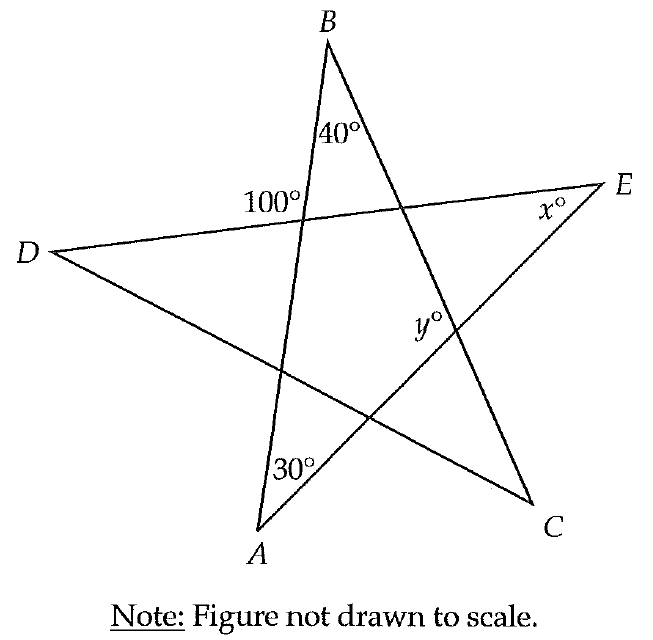PROPERTIES OF DIVISION WORKSHEET
To learn about properties of division,
Problem 1 :
A person wants to share the money $240 equally to his four sons. He is trying to split $240 using addition of ($60 + $60 + $60 + $60). Instead of doing so, what can he do to know the share of each son ?
Problem 2 :
Are 15 ÷ 5 and 5 ÷ 15 equal ? What do you come to know from the result ?
Problem 3 :
Are 12 ÷ (6 ÷ 2) and (12 ÷ 6) ÷ 2 equal ? What do you come to know from the result ?
Problem 4 :
Do the divisions given below and discuss your result.
5 ÷ 0, 100 ÷ 0, a ÷ 0
Problem 5 :
Do the divisions given below and discuss your result.
5 ÷ 1, 100 ÷ 1, 0 ÷ 1
Problem 6 :
Do the divisions given below and discuss the sign (positive or negative) of your result.
250 / 50, (-144) / (-12), (-120) / 20, 100 / (-25)

Problem 1 :
A person wants to share the money $240 equally to his four sons. He is trying to split $240 using addition of ($60 + $60 + $60 + $60). Instead of doing so, what can he do to know the share of each son ?
Solution :
He uses addition to split $240 into four equal parts. But always this is not possible.
Because, when we have huge quantity and want to split it into many equal parts, we can not use this method. In that kind of situation, we have to use division.
Let us see, how to use division to find the share of each son.
That is,
240 ÷ 4 or 240/4
To know the result of the above division, we are going to use multiplication.
That is,
The result of the above division is equal to, "How many times of the denominator is equal to the numerator ?"
More clearly, how many times 4 goes into 240 ?
60 times of the denominator 4 is equal the numerator 240.
Then,
240 ÷ 4 = 240 / 4
240 ÷ 4 = 60
So, each son will receive $60.
Problem 2 :
Are 15 ÷ 5 and 5 ÷ 15 equal ? What do you come to know from the result ?
Solution :
15 ÷ 5 = 15/5 = 3
and
5 ÷ 15 = 5/15 = 1/3
Therefore, 15 ÷ 5 ≠ 5 ÷ 15
From the above working, we observe that division is not commutative.
So, commutative property does not hold for division.
Problem 3 :
Are 12 ÷ (6 ÷ 2) and (12 ÷ 6) ÷ 2 equal ? What do you come to know from the result ?
Solution :
12 ÷ (6 ÷ 2) = 12 ÷ 3 = 4
and
(12 ÷ 6) ÷ 2 = 2 ÷ 2 = 1
Therefore,
12 ÷ (6 ÷ 2) ≠ (12 ÷ 6) ÷ 2
From the above working, we observe that division is not associative.
So, associative property does not hold for division.
Problem 4 :
Do the divisions given below and discuss your result.
5 ÷ 0, 100 ÷ 0, a ÷ 0
Solution :
5/0 = Undefined
100/0 = Undefined
a/0 = Undefined
Division of any number (except 0) by zero is meaningless.
Because division by zero is not defined.
Problem 5 :
Do the divisions given below and discuss your result.
5 ÷ 1, 100 ÷ 1, 0 ÷ 1
Solution :
5 ÷ 1 = 5/1 = 5
100 ÷ 1 = 100/1 = 100
0 ÷ 1 = 0/1 = 0
This shows that dividing any number by 1 is equal to that number.
In general, for any real number "a" we have
a ÷ 1 = a/1 = a
Problem 6 :
Do the divisions given below and discuss the sign (positive or negative) of your result.
250 / 50, (-144) / (-12), (-120) / 20, 100 / (-25)
Solution :
250 / 50 = 5 (Positive)
(-144) / (-12) = 12 (Positive)
(-120) / 20 = -6 (Negative)
100 / (-25) = -4 (Negative)
From the above working, we can come to know the following facts,
Positive number / Positive number = Positive number
Negative number / Negative number = Positive number
Negative number / Positive number = Negative number
Positive number / Negative number = Negative number
Kindly mail your feedback to v4formath@gmail.com
We always appreciate your feedback.
©All rights reserved. onlinemath4all.com
Recent Articles
-
Digital SAT Math Problems and Solutions (Part - 134)
Apr 02, 25 12:40 AM
Digital SAT Math Problems and Solutions (Part - 134) -
SAT Math Resources (Videos, Concepts, Worksheets and More)
Apr 02, 25 12:35 AM
SAT Math Resources (Videos, Concepts, Worksheets and More) -
Digital SAT Math Problems and Solutions (Part 135)
Apr 02, 25 12:32 AM
Digital SAT Math Problems and Solutions (Part 135)

